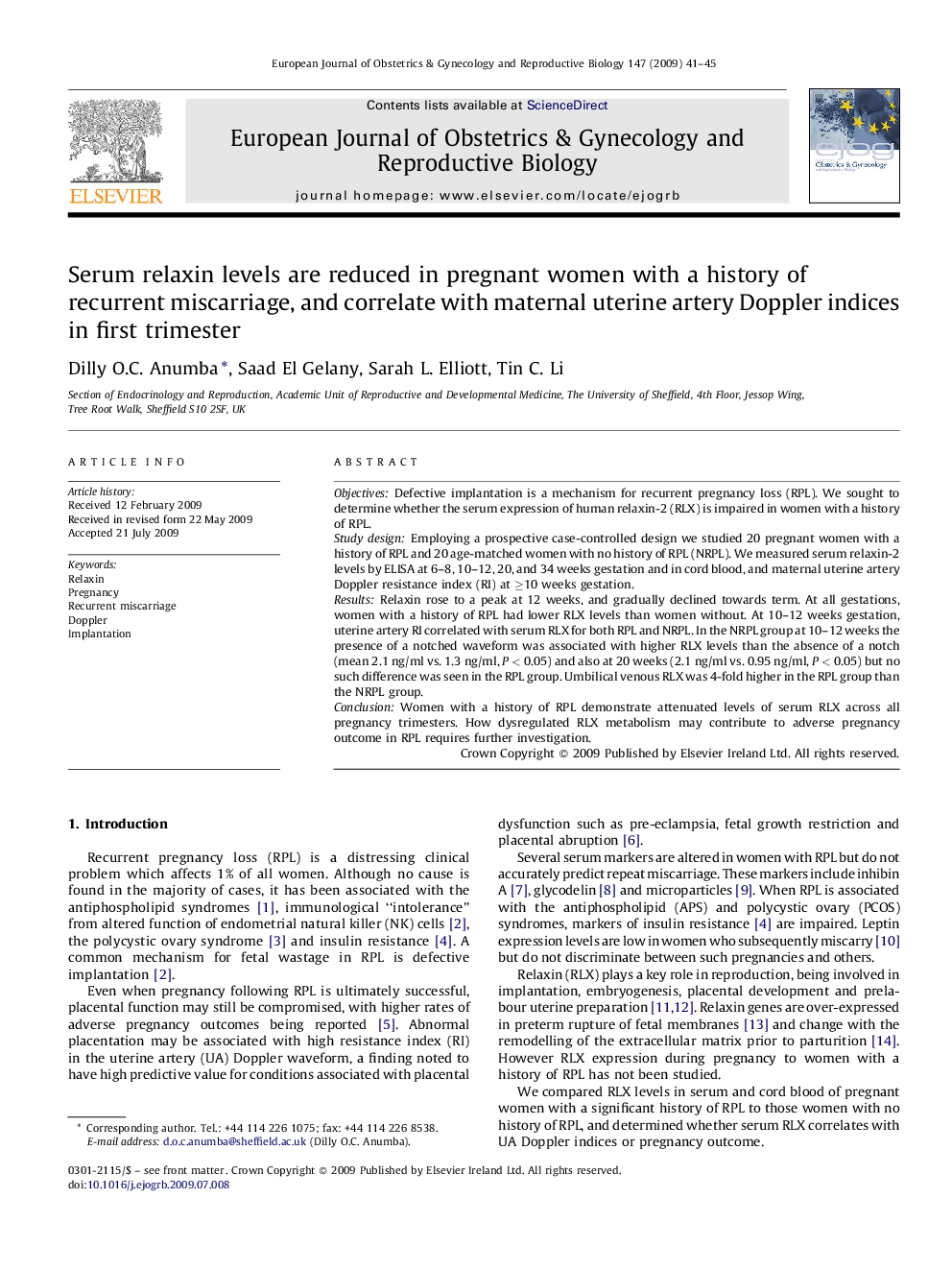| کد مقاله | کد نشریه | سال انتشار | مقاله انگلیسی | نسخه تمام متن |
|---|---|---|---|---|
| 3921452 | 1599859 | 2009 | 5 صفحه PDF | دانلود رایگان |

ObjectivesDefective implantation is a mechanism for recurrent pregnancy loss (RPL). We sought to determine whether the serum expression of human relaxin-2 (RLX) is impaired in women with a history of RPL.Study designEmploying a prospective case-controlled design we studied 20 pregnant women with a history of RPL and 20 age-matched women with no history of RPL (NRPL). We measured serum relaxin-2 levels by ELISA at 6–8, 10–12, 20, and 34 weeks gestation and in cord blood, and maternal uterine artery Doppler resistance index (RI) at ≥10 weeks gestation.ResultsRelaxin rose to a peak at 12 weeks, and gradually declined towards term. At all gestations, women with a history of RPL had lower RLX levels than women without. At 10–12 weeks gestation, uterine artery RI correlated with serum RLX for both RPL and NRPL. In the NRPL group at 10–12 weeks the presence of a notched waveform was associated with higher RLX levels than the absence of a notch (mean 2.1 ng/ml vs. 1.3 ng/ml, P < 0.05) and also at 20 weeks (2.1 ng/ml vs. 0.95 ng/ml, P < 0.05) but no such difference was seen in the RPL group. Umbilical venous RLX was 4-fold higher in the RPL group than the NRPL group.ConclusionWomen with a history of RPL demonstrate attenuated levels of serum RLX across all pregnancy trimesters. How dysregulated RLX metabolism may contribute to adverse pregnancy outcome in RPL requires further investigation.
Journal: European Journal of Obstetrics & Gynecology and Reproductive Biology - Volume 147, Issue 1, November 2009, Pages 41–45